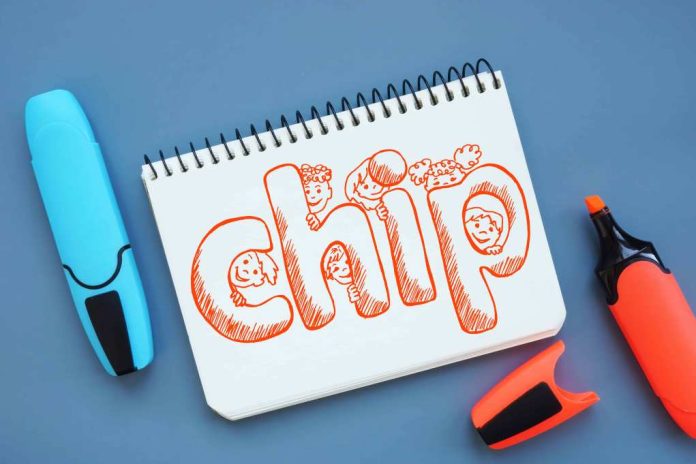
The cost of healthcare can be a lot for people to deal with. Because of this, it is important to have a coverage plan. Sadly, the cost of standard health insurance can be too much for families to handle. At the same time, they may not be able to qualify for other healthcare assistance like Medicaid. When families find themselves in this tough position to be in, they can feel hopeless. Luckily, that may not be the case! There is a government support opportunity that can help those in this exact situation. It is known as the Children’s Health Insurance Program (CHIP).
What is the Children’s Health Insurance Program (CHIP)?
When most people think of CHIP, they may think of a snack. However, it is also a beneficial program that can help qualifying families. This program can give health coverage to uninsured children specifically. This opportunity has been around since 1997 and has been extended through 2027. This extension is thanks to the Helping Ensure Access for Little Ones, Toddlers, and Hopeful Youth by Keeping Insurance Delivery Stable Act (HEALTHY KIDS Act) as well as the Advancing Chronic Care, Extenders, and Social Services Act (ACCESS Act). It is funded jointly by both the federal government and state governments. However, states have the responsibility of actually administering and operating the program.
Who Qualifies for CHIP?
Only eligible people can benefit from this support opportunity. This includes low-income children as well as low-income pregnant women (under a different CHIP). It’s important to keep in mind that states have the responsibility of administering the program. States can choose to cover specific groups of people that traditionally have been excluded from CHIP. This includes those that are lawfully residing or those that have access to coverage as a public employee.
Children Qualifications
The qualifications that children need to meet will be different from those that pregnant women need to meet. For a child to qualify for CHIP, they must:
- Be younger than 19 years old.
- Have qualifying citizenship or immigration status.
- Be uninsured.
- Be a resident of the state.
- Qualify within financial income limits for the state.
- Qualify within any other state-specific criteria.
Many instances exist where a child cannot be considered eligible for CHIP assistance. This includes children that are:
- Public institution inmates.
- Mental disease patients in an institution.
- Able to qualify for health coverage through a state health benefits plan thanks to the public agency employment of a family member (but there are exceptions).
We know we might sound like a broken record but states have the flexibility to change their eligibility standards. These are just general guidelines to consider. However, the best way to confirm eligibility is by checking directly with your state!
Pregnant Women Qualifications
States also have the flexibility to decide some types of coverage they can provide. Some states may opt to cover prenatal care, delivery, and even postpartum care! For a state to provide coverage to pregnant women, they will need to make sure they meet certain conditions. Some of these conditions include covering:
- Children younger than 19 years old under CHIP (or Medicaid) up to a minimum of 200% of the Federal Poverty Level (FPL).
- Pregnant women under Medicaid up to a minimum of 185% of the FPL.
It’s also important to keep in mind that infants that are born from a pregnant woman covered by CHIP automatically qualify for the program (or for Medicaid). Through this automatic qualification, they will not need an application or any further eligibility determination. Infants will have this type of CHIP coverage until they turn one year old.
Enrollment Strategies
When it comes to qualifying for CHIP, the federal government gives states the option to implement different options for enrollment strategies. This includes:
- Express Lane Eligibility (ELE)
- Continuous Eligibility
- Presumptive Eligibility
Express Lane Eligibility (ELE)
ELE is a simpler process for determining the qualifications for CHIP (and Medicaid). This also applies to re-determining! States that use the ELE strategy can depend on information from another express lane agency for eligibility factors which include income level and household size. Express lane agencies can include programs like:
- Supplemental Nutrition Assistance Program (SNAP)
- Temporary Assistance for Needy Families (TANF)
- Head Start
- National School Lunch Program (NSLP)
- Supplemental Nutrition Program for Women, Infants, and Children (WIC)
Continuous Eligibility
Children can get 12 months of continuous coverage through CHIP (and Medicaid) regardless of any income changes that their family may experience in the year. This type of enrollment strategy is beneficial because states ensure that children have consistent access to health care (that they are eligible to receive) through this health coverage option.
Presumptive Eligibility
Through this enrollment strategy, states have the opportunity to use XXI funds to handle the costs of CHIP coverage. They can only use these funds during a frame of presumptive eligibility that is based on a screening process and a final qualification determination.
Different Kinds of CHIP
When people think of this program, they may not realize there are different kinds of CHIP assistance. However, the difference is important because it can impact how a person deals with this support opportunity. There is:
- Medicaid Expansion CHIP
- Separate CHIP
Medicaid Expansion CHIP
Through Medicaid Expansion CHIP, individuals can benefit from the same Medicaid benefits that children can get under the Medicaid program (or section 1115 demonstration program) for the state. States that choose to run this type of CHIP need to provide support like Early and Periodic Screening, Diagnostic and Treatment services. These are known as EPSDT Benefits!
Separate CHIP
The other form of CHIP is Separate CHIP. With this type of CHIP, states have the opportunity to provide either benchmark coverage, secretary-approved coverage, or benchmark equal coverage.
Benchmark Coverage
When referring to benchmark coverage, it means health coverage that is similar to the health coverage in any of the following coverage health plans:
- Health Maintenance Organization (HMO) Plans
- Federal Employees Health Benefit Plans
- State Employee Health Benefit Plans
Secretary-Approved Coverage
This type of coverage is a type of health benefits coverage that the United States Health and Human Services (HHS) Secretary approves. The coverage that is approved will be determined as being able to provide adequate coverage for the receiving population.
Benchmark Equal Coverage
Benchmark equal coverage (also known as benchmark-equivalent coverage) can provide coverage that is similar to one of the benchmark packages. Besides needing to provide the necessary coverage that comes along with CHIP, it also needs to provide coverage for the following services:
- Specific surgical services
- Specific medical services
- Inpatient hospital services
- Outpatient hospital services
- Laboratory services
- X-ray services
Benefits of Separate CHIP
States have the responsibility of providing specific coverage through CHIP. Examples of coverage they need to provide include the following:
- Wellness for babies and children
- Dental coverage
- Behavioral health care
- Vaccinations
Wellness for Babies and Children
Wellness visits are an important part of health care. Babies and children need to have this coverage! States also have the responsibility of figuring out the schedule for those visits. A lot of states use a suggested schedule from the American Academy of Pediatrics!
Dental Coverage
The coverage that CHIP can provide must be enough to prevent disease while promoting oral health. Besides preventative coverage, dental coverage must also be able to restore oral structures to healthy function as well as address any emergency conditions!
Behavioral Health Care
CHIP (as well as Medicaid) must comply with the Mental Health Parity and Addiction Equity Act (MHPEA). This act prohibits specific discriminatory practices that limit insurance coverage. The requirement to comply with this act applies to:
- Co-pays
- Co-insurance
- Out-of-pocket maximums
- Limits on service utilization
- Limits on non-quantitative treatment
Vaccinations
Age-appropriate vaccinations must be covered under CHIP. It’s important to note that states that decide to have a separate CHIP program will need to purchase vaccines for recipients with CHIP federal and state matching funds. On the other hand, states that have Medicaid Expansion CHIP have vaccines paid for by the Vaccines for Children (VFC) program. VFC funds cannot be used towards buying vaccines for separate CHIP coverage!
How to Apply for CHIP
If you want to benefit from CHIP, you will need to apply. You can apply at your state’s Medicaid/CHIP agency. They are the ones that have total responsibility for managing the operations of Medicaid/CHIP in their state.
Bottom Line
Dealing with the cost of healthcare as a family can be super stressful to deal with. It can be hard to make sure that your children have the coverage they need. However, there may be more hope than you realize!
One opportunity is the Children’s Health Insurance Program (CHIP). This is a great opportunity for people that make too much to benefit from Medicaid but don’t make enough to handle the cost of private health insurance. There are a variety of services that CHIP coverage handles and it can help children who are younger than 19 years old. However, there are cases where CHIP can help more than this specific group, specifically when it comes to pregnant women!
If you want to benefit from this opportunity, you should reach out to your local Medicaid/CHIP agency. This is where you can submit an application and get more information on this assistance option!




























